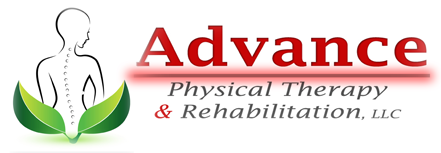30 Apr Physical Therapy for Scoliosis
Scoliosis is a disfiguring condition that can ultimately impact your breathing and other aspects of your overall health. Physical therapy has proven to be an effective treatment for scoliosis, and after you consult with a physical therapist, there are a few exercises that you can do from home to reduce the symptoms of this condition. Here’s some background on scoliosis along with information on why physical therapy works so well for this spine condition.
What Is Scoliosis?
Scoliosis is a type of lateral spine curvature that usually sets in during prepubescence. While the spine is naturally curved, this curvature normally occurs along the sagittal plane, which is the line that separates the right and left halves of the body.
If the spine curves in any way other than normal sagittal curving, scoliosis has occurred. In individuals with scoliosis, the head and neck are not arranged in an ideal relationship with the rest of the body, which can cause severe discomfort. This condition is also readily visible, which can lead to reduced self-confidence.
Scoliosis affects around 3 percent of the population, and if this condition is caught early enough, it can be treated with a back brace or spinal fusion surgery. The three types of scoliosis are congenital, neuromuscular, and idiopathic, and each type of scoliosis can be treated with physical therapy.
How Is Scoliosis Diagnosed?
Due to the easily recognizable symptoms that this condition causes, it’s usually possible to diagnose scoliosis with a basic physical examination. During this physical examination, your doctor will measure your spine curvature with the Cobb Method, which rates the severity of instances of scoliosis based on degrees of curvature.
A curve of 10 percent or less is not generally considered to be serious, and it can be corrected with physical therapy only. A curve greater than 25 percent, however, is considered to be serious, and various corrective treatments may be required.
In some cases, the Adam’s Forward Bend Test may be used to assess suspected instances of scoliosis, and this test involves bending forward with your feet together. If this type of assessment isn’t enough to effectively diagnose scoliosis, medical imaging tests, such as X-rays, CAT scans, or MRIs may be ordered to confirm the diagnosis.
How Does Physical Therapy Treat Scoliosis?
In children, scoliosis may resolve itself without intervention. Therefore, careful observation of a child’s spinal development is sometimes the best way to treat this condition. Otherwise, it may be necessary for a child to wear a back brace or undergo surgery to effectively treat scoliosis.
Physical therapy is a non-invasive treatment for scoliosis that has proven to be very effective. In some cases, physical therapy may be effective enough to allow a patient to avoid surgery. For instance, the Schroth Method is commonly used to treat this condition, and it involves a variety of simple daily exercises that are usually performed with the assistance or under the observation of a physical therapist.
Other treatment methods may involve the Lyon approach, and another treatment called the Scientific Exercise Approach to Scoliosis (SEAS) has been developed in Italy to treat this condition. When you meet with a physical therapist to discuss treatment plans for your scoliosis, you’ll have the opportunity to review a number of different treatment methods and determine which method would be best for your situation.
Physical therapists can help with scoliosis at any stage during the treatment process for this condition. Whether you’re currently using a back brace or you just went through spine surgery, adding a physical therapist to your care time can speed up recovery times and reduce symptoms.
While there are a variety of physical therapy exercises that you can perform from home to reduce the symptoms of scoliosis, some treatment methods can only be performed by a physical therapist. For instance, physical therapists are trained in manual therapy, which involves the application of pressure to restore motion to areas of the body that have been affected by scoliosis.
Your physical therapist may also apply heat, cold, or electrical stimulation to improve the symptoms of scoliosis. In some cases, application of ultrasound treatment may also be effective. However, education is the most important type of assistance that your physical therapist can provide; with more information on what causes scoliosis and how to reduce the symptoms of this condition, you’ll be able to take steps to address this spine irregularity on your own.
Effective Scoliosis Physical Therapy Exercises
Here are a few examples of the types of exercises that your physical therapist may incorporate into your individualized treatment plan:
1. Re-Educational Stretches
While it might seem intuitive to stretch in the opposite direction that your spine is curving, prominent physical therapists suggest that the opposite may be true. Scoliosis can be caused by lax muscles on the opposite side from where your spine is curving, and stretching these muscles can cause them to pull back and shorten. In a standing position, bend your body in the direction of your spinal curvature, hold, and release.
2. Upward Dog
To perform the Upward Dog pose, start in the plank position, and gradually push your torso upward while keeping your hips and legs on the floor. Hold for 10 seconds, and then release.
3. Downward Dog
The Downward Dog pose begins in a plank position with your arms stretched out straight in front of you. Push your hips up and back as far as you can, and hold this position for 10 seconds before slowly lowering your hips downward.
4. Step Down and Reach
Step onto a small box with the foot that has been shortened by scoliosis. Bend your opposite leg and sink toward the floor. As you do so, raise the arm on the side of your opposite leg as far as you can. Only perform this exercise on the side that has been affected by scoliosis.




Sorry, the comment form is closed at this time.